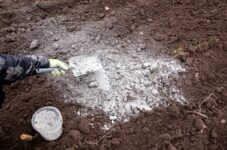
Is Wood Ash Good for the Garden? 5 Tips to Use It Safely
While the ash from wildfires can help nourish new growth, is wood ash good for the garden? Yes, the ashes from your wood-burning fireplace can help improve your garden soil. Wood ash has nutrients plants need, like potassium and phosphorus, so it can be a way to feed plants in your garden. However, too much wood ash can be detrimental so it’s important to know where and when to use it. The following expert tips will help you use wood ash in the garden safely and effectively.
Chelsea McKinley is a plant health specialist at the U.S. Botanic Garden in Washington, D.C. She holds a B.S. in Environmental Horticulture Science.
Helin Loik-Tomson / Getty Images
Tips for Using Wood Ash in the Garden
Keep these tips in mind to make the most of wood ash in your garden while avoiding damage to your plants.
1. Lower Soil pH
Wood ash has a high pH, usually around 10 to 12, says Chelsea McKinley, plant health specialist at the U.S. Botanic Garden in Washington, D.C. Most plants prefer a soil pH of around 6.5. If your soil is acidic (lower than 6.5) and you want to neutralize it, wood ash is a good way to raise the pH. “Think of wood ash as an alternative to lime,” McKinley says.
2. Fertilize Vegetable Gardens
Wood ash contains 25% to 50% calcium, McKinley says. Calcium is a trace element that helps plants flower and fruit, so adding it to soil can benefit a vegetable garden. Calcium also helps prevent blossom end rot in tomatoes, peppers, squash, and watermelons, a disease when developing fruit doesn’t get enough calcium. Broccoli, cabbage, and Brussels sprouts do best in alkaline soil, so applying wood ash to the soil before planting them raises the pH so they thrive.
Test your soil before using wood ash or any other soil amendments. You need to know your current soil conditions to know what it needs to nourish and support plants.
Wood ash also contains 5-7% potassium and 1.5-2% phosphorous, both of which are essential nutrients for your plants, so wood ash can make a decent fertilizer. McKinley says there are better fertilizers that will deliver more nutrients without changing soil pH. “If your soil pH is good, I’d look into other fertilizers,” she says.
Don’t use wood ash around acid-loving plants. It raises soil pH, so don’t put it around blueberry bushes, azaleas, camellias, or other plants that like low-pH, acidic soil.
3. Mix Wood Ash with Soil Before Planting
Wood ash can burn seedlings, plant roots, and leaves due to its high pH. “It needs to be diluted with soil,” McKinley says. Rake it into the soil thoroughly before planting seeds or transplants.
4. Put Wood Ash in Your Compost Pile
Use small amounts of wood ash in a compost pile to reduce the acidity. Lower pH improves conditions for composting worms and produces alkaline compost that makes great mulch for vegetable gardens. Add a few handfuls of wood ash to your compost heap for every 6 inches of material and mix well. Use a light touch because adding too much wood ash to your compost can make it too alkaline and slow down decomposition.
Don’t use ash from coal, charcoal briquettes, or treated timber on food crops. The ash may contain substances that are toxic to people.
5. Lower Your Carbon Footprint
Using wood ash swept from your fireplace is an eco-friendly alternative to buying lime, wood ash, and fertilizer manufactured in a distant city and trucked to your local big box store. It’s also more desirable than sending it to a landfill. You have the ashes; you might as well recycle them in your garden or compost pile. And that way, your winter fires can be transformed into summer tomatoes.



